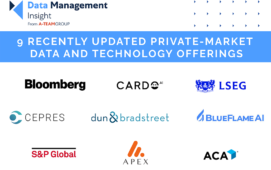It seems that all aspects of the data underlying decision making within the financial services community are under the microscope at the moment and last week’s FISD issue brief highlighted that index and benchmark data is no exception. Panellists including representatives from the whole range of participants in the index and benchmark community noted that clients are requesting the ability to be able to drill down into and cross reference this data on a regular basis.
The sophistication and complexity of the indices being offered on the market has not helped matters: the industry has come a long way over the last decade in this regard and the underlying data has evolved along with it. For example, there has been a move from providing just pure benchmarking indices, which track the performance of a particular market, to an increase in the number of investable type indices, which allow firms to invest in a certain asset type or market that may not be available for direct investment. This trend entails a range of new data sources being added to the mix, some of which may be difficult to source and verify.
The tensions facing the index provider can also vary depending on the intention of the client with regards to the internal and external use of the benchmark data. Various external indices have been established by vendors to take into account internal customised benchmarks within their clients, for example, and dealing with custom indices and blends is a challenge within itself. Exactly who owns these benchmarks can be a significant issue, explained one panellist.
On this note, the customisation aspect of indices has increased, said panellists, especially within the community of larger clients. This, in turn, has pushed up costs and put greater pressure on firms with regards to providing transparency into these tweaks and customisations and their impact on the overall benchmark. The cross referencing of this data is increasingly important as a result.
The use of indices is also no longer limited to these larger players, however; even hedge funds are getting in on the action. With such a wide range of clients using the data and all of them using it for different ends, the standardisation of the underlying data becomes even more critical, agreed panellists. Ensuring standards are put in place and adhered to is therefore of increasing importance, as well as meeting demand for additional data for reporting purposes.
Panellists noted that corporate actions could also cause problems in the day to day lives of those involved in the index business. Client committees can only go so far in determining strategies to cope with these events ahead of time, after all. This can therefore mean delays are introduced as index providers seek out input on the correct methodologies required to deal with events such as spin offs and dividends.
The dynamics that are affecting the risk management and pricing functions such as the pressure on data transparency (see more on which here) are therefore having a serious impact on the index provider space, all at a time when there is downward pressure on costs. Much like the wider market and reference data space, clients are asking for more for less on all fronts.
Subscribe to our newsletter




